Flavor and taste characteristics of Guatemalan coffee beans Antigua Huashen coffee beans hand grinding degree water temperature
Professional coffee knowledge exchange more coffee bean information please follow the coffee workshop (Wechat official account cafe_style)
Located in Central America, Guatemala has a tropical rainforest climate, plateau jungle, high humidity and warm climate. According to Qianjie, people in Guatemala have known how to grow and drink coffee a long time ago, and people there drink coffee every day, thus giving rise to a rich coffee culture. So, what's going to be introduced in front of the street today is Guatemalan coffee.
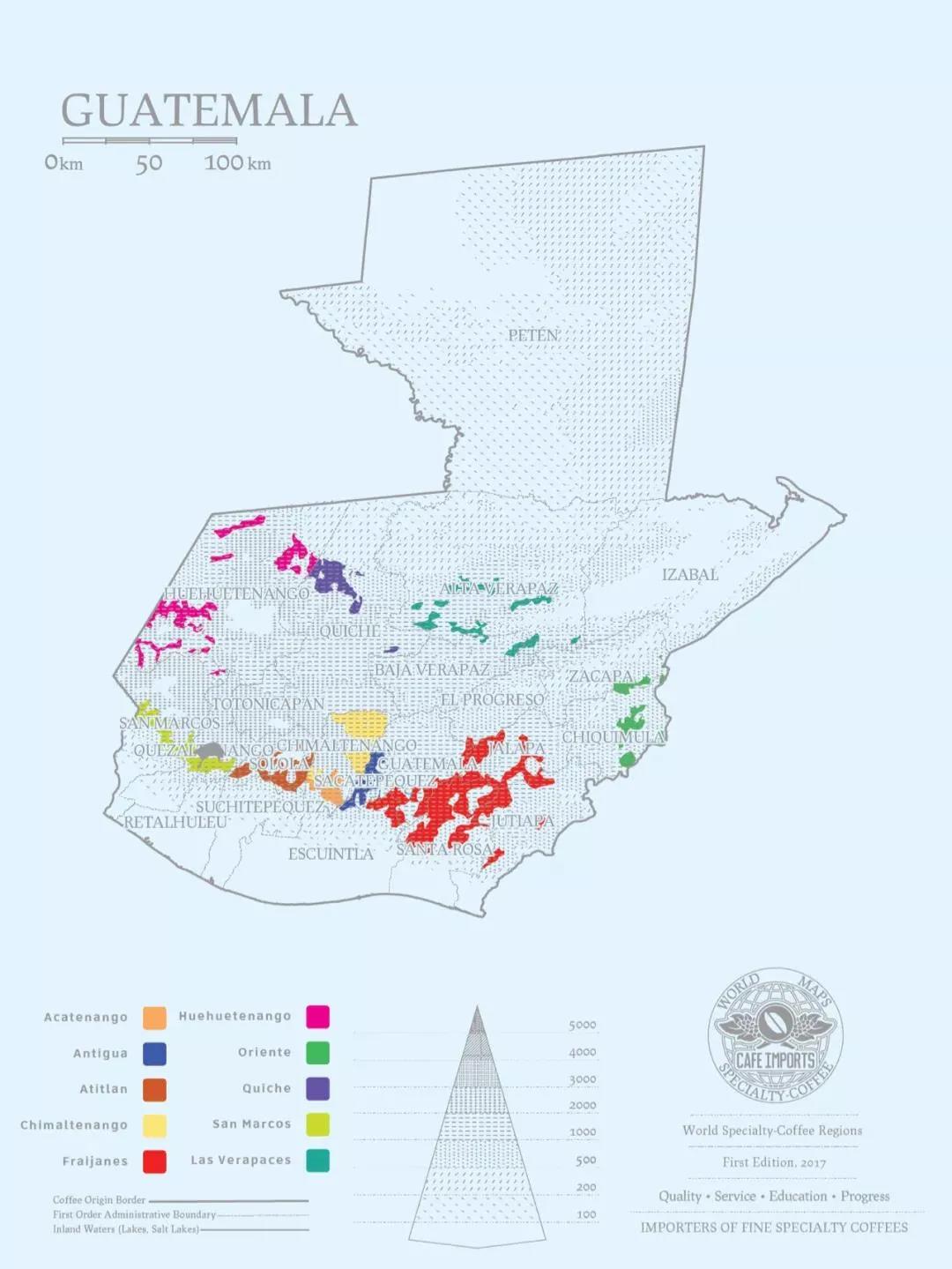
Qianjie knows each kind of bean, will first understand the topography, climate, and treatment of this bean, and so on. Guatemala is located in Central America, and there are many volcanoes nearby, so the soil in Guatemala is very fertile and rich in minerals. However, everything has its advantages and disadvantages. Because nearby volcanoes are always unstable, it has always been a potential risk for Guatemala. But also because of this type of climate, Guatemalan coffee beans have a unique flavor.
Guatemala has eight coffee-producing areas, divided into five volcanic and three non-volcanic areas. Five major volcanic areas: Antigua (Antigua), Arcatel Nanguo (Acatenango), Lake Attilan (Atitlan), Mount San Marco (Volcanic San Marcos), Farahan Plateau (Fraijanes). Three major non-volcanic producing areas: Vivette Nanguo (Huehuetenango), Koban (Coban), and New Oriental (New Oriente).
Qianjie will take you to learn about these eight producing areas in Guatemala.
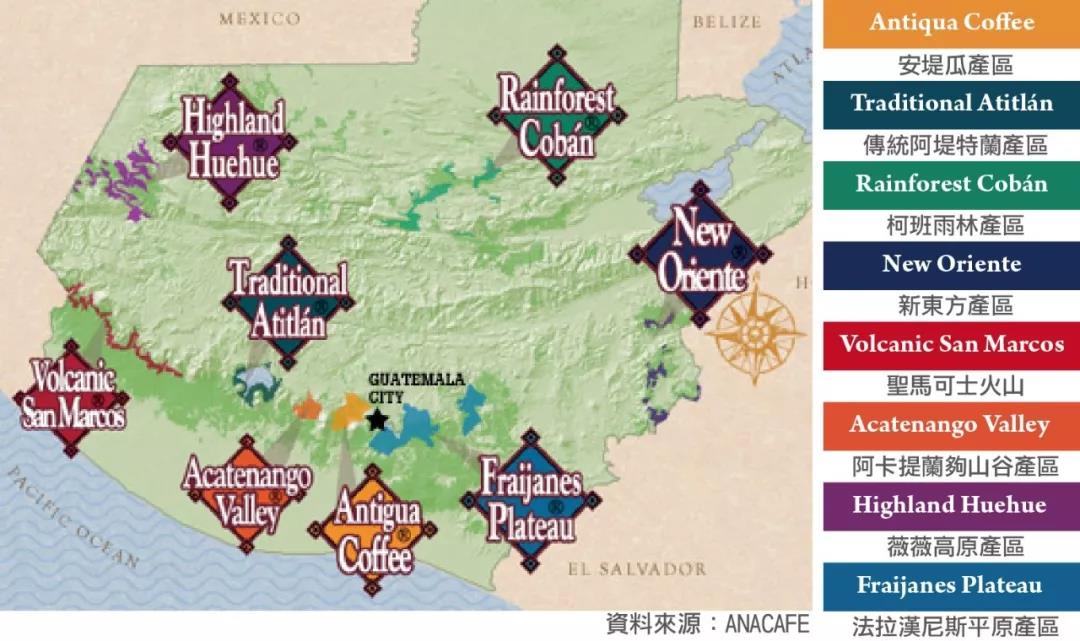
The most famous producing areas in Guatemala are Antigua and Vivette South Fruit. Among them, Antigua is more famous than Vivette Nanguo. The transaction price of coffee beans in Antigua is the highest among the eight producing areas, but the slightly special south fruit is not inferior, and the quality of coffee continues to improve. Therefore, one of the seven food rations beans in Qianjie represents Guatemala, which is from the tiny South Fruit producing area of Guatemala. Qianjie believes that Guatemalan coffee beans have a good sense of hierarchy and saturation at the same time, so Qianjie also put on a Flower God coffee bean from Antigua.
Antigua is located in the central highlands of Guatemala, with a subtropical monsoon climate, high rainfall and fertile volcanic ash soil. The coffee beans produced here have a very typical Guatemalan flavor, with fruit aromas in the bright acidity. It's eye-catching. It also gives Antigua a place in Guatemalan coffee.
Qianjie found that the coffee bean flavor of Akanan fruit is also very good by comparing the coffee beans in Guatemala. Qianjie thinks that the flavor of Arcatel is similar to Antigua, but the acidity is a little less, the mellow thickness is full and the aroma is charming. Maybe it has a lot to do with its topography. Akernango is the highest altitude producing area in Guatemala, adjacent to volcanoes, with fertile soil and a large temperature difference between day and night, so the coffee sweetness in this area is higher than that in other coffee producing areas.
The largest producing area in Guatemala and located in a high-altitude volcanic lake is Lake Attilan, which has the most organic matter in the soil. There is a cool breeze blowing from the lake every day, with its own style and characteristic micro climate, which is very suitable for the growth of coffee trees.
Farahan production area around the capital Guatemala, high altitude, adequate rainfall, humidity changes greatly. Ash from Pacaya, Guatemala's most active volcano, provides important minerals for the region's soil, but occasionally has an impact on human safety and infrastructure. The area has a very good sun condition, which is very sufficient during the coffee drying period, which ensures the sun condition in the area.
The San Marco volcano producing area, which has the warmest climate and the heaviest rainfall among the eight producing areas, has a very early rainy season, so it blossoms very early at the same time. This producing area is also washed, and then the coffee is dried in the yard and dried at a low temperature.
Among them, the three major non-volcanic areas of Guatemala are also well known. Qianjie food bean series of the micro special south fruit producing area, the name comes from the Navat language, which means "the land of the ancients". The coffee flavor in this producing area is mainly washed by water, and the coffee here has a fragrant and clear fruit flavor. The flavor is refreshing.
Guatemala also has an unspoiled natural environment and a unique climate producing area, that is, the Koban producing area. This region is close to the core of Mayan culture, which is the source of the largest tropical rainforest in Central America and Guatemala.
The youngest of the eight major coffee producing areas in Guatemala is the New Oriental region, which used to be the poorest producing area in Guatemala, where farmers grow coffee with the natural environment and fertile land of the New Oriental. Slowly emerge from poverty.
Guatemalan coffee varieties are mainly bourbon, iron pickup, Kaddura, Kaduai and a small amount of yellow bourbon, Rosa and Pacamara, as well as the newly cultivated variety Maracadura. Qianjie believes that people who often read the articles on Qianjie official account already know a lot about bourbon, tin pickup and other varieties, but they are very strange to Pacamara. Here, Qianjie will give you a brief introduction to this novel breed.
Pacamara is a hybrid of Pacas Pacas and Marago Rippi Maragogype found in El Salvador in 1950. The plants are smaller, so they can be planted more densely and get higher yields. It is suitable for planting in areas with an altitude of more than 1200 meters and an annual rainfall of less than 2500 mm. The varieties of Hua Shen coffee in the front street are bourbon and Kaddura.
Guatemala has its own coffee bean grading system. It is graded according to altitude. Here, I'll talk to you in front of the street. This grading method is actually not complicated. Because with the increase in altitude, the temperature continues to decrease. Therefore, the quality of coffee produced at high altitude is generally higher than that at low altitude. At high altitude, the growth rate of coffee is very slow, which is also conducive to the accumulation of coffee substances. The higher the altitude, the higher the density of coffee beans and the higher the grade of raw coffee beans. Therefore, Guatemala uses altitude to classify quality.
Qianjie through a cup test to compare several Guatemalan coffee beans, the flower god from Antigua can best reflect the flavor of the Guatemalan region. Here is the basic information about these two types of coffee on Qianjie:
1. Front Street Coffee Guatemala Flower God Coffee beans
Producing area: Antigua producing area
Trader: La Minita
Altitude: 1200-1600m
Varieties: bourbon, Kaddura
Treatment method: washing treatment
Grade: SHB
Flavor: sour berries, smoky, citrus, light chocolate, rich layers, smooth taste.
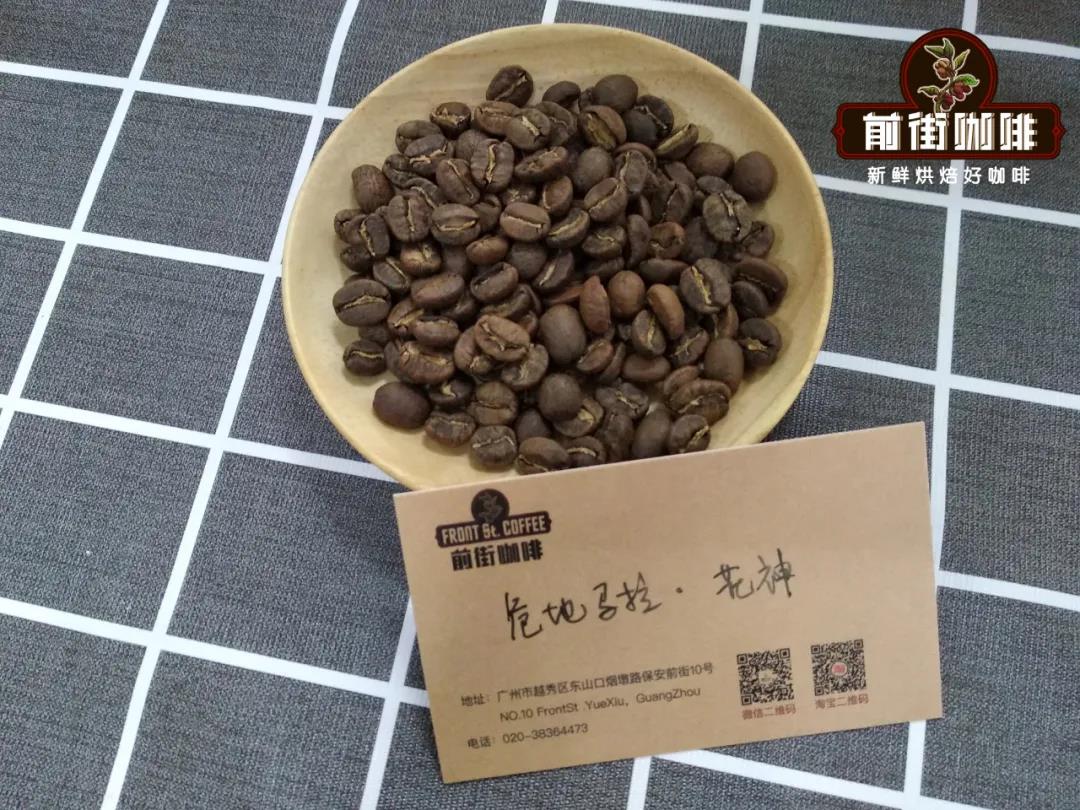
two。 Front Street Coffee Guatemala Vivette Nan Fruit Coffee beans
Producing area: Vivette Nanguo
Altitude: 1500-2000m
Varieties: bourbon, Kaddura, Kaduai
Treatment method: washing treatment
Flavor: acidity of imported citrus and berries, with nutty aromas in the middle and a hint of tea in the finish.
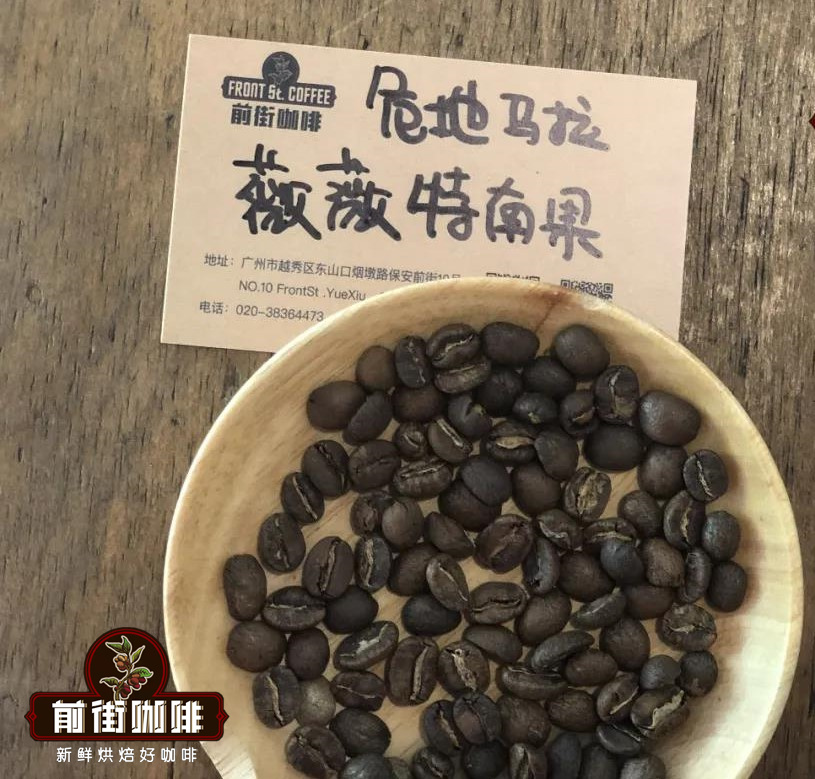
For more boutique coffee beans, please add private Qianjie coffee on Wechat. WeChat account: kaixinguoguo0925
Important Notice :
前街咖啡 FrontStreet Coffee has moved to new addredd:
FrontStreet Coffee Address: 315,Donghua East Road,GuangZhou
Tel:020 38364473
- Prev
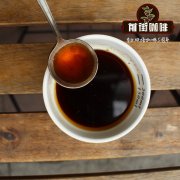
How to brew coffee powder? Medium to deep roast coffee powder hand brewing process?
Professional coffee knowledge exchange More coffee bean information Please pay attention to coffee workshop (Weixin Official Accounts cafe_style) How to brew deep roast coffee powder? Medium to deep roast coffee powder hand brewing process? Deep baked beans texture is much looser, water absorption is good, powder layer is easy to swell by water, coffee powder is easy to float on the surface, but the bitterness is relatively heavy, so generally
- Next

What is the coffee in Guatemala? what are the characteristics of Guatemalan coffee beans?
Professional Coffee knowledge Exchange more information on coffee beans Please follow the coffee workshop (Wechat official account cafe_style) about the sixth century AD, an Arab shepherd named Kaldi secretly observed the goats while grazing and found that they had eaten the red fruit of a wild shrub under the hillside and became extremely excited. The curious Caldy picked the fruit himself and found it muddy after tasting it.
Related
- Detailed explanation of Jadeite planting Land in Panamanian Jadeite Manor introduction to the grading system of Jadeite competitive bidding, Red bid, Green bid and Rose Summer
- Story of Coffee planting in Brenka region of Costa Rica Stonehenge Manor anaerobic heavy honey treatment of flavor mouth
- What's on the barrel of Blue Mountain Coffee beans?
- Can American coffee also pull flowers? How to use hot American style to pull out a good-looking pattern?
- Can you make a cold extract with coffee beans? What is the right proportion for cold-extracted coffee formula?
- Indonesian PWN Gold Mandrine Coffee Origin Features Flavor How to Chong? Mandolin coffee is American.
- A brief introduction to the flavor characteristics of Brazilian yellow bourbon coffee beans
- What is the effect of different water quality on the flavor of cold-extracted coffee? What kind of water is best for brewing coffee?
- Why do you think of Rose Summer whenever you mention Panamanian coffee?
- Introduction to the characteristics of authentic blue mountain coffee bean producing areas? What is the CIB Coffee Authority in Jamaica?

